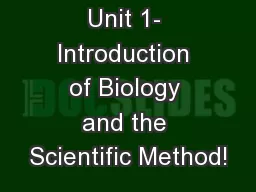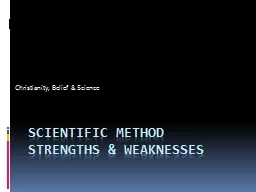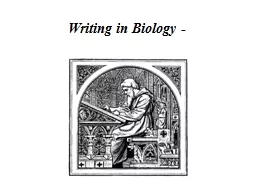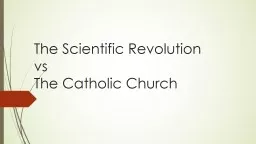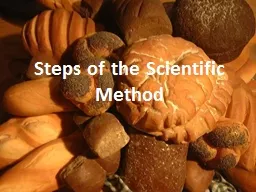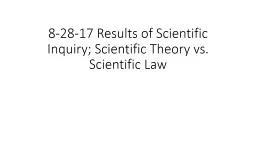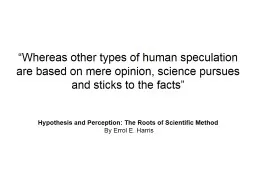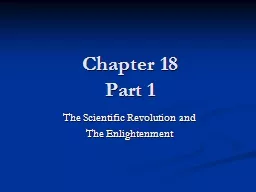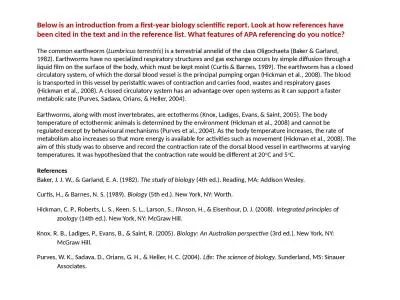PPT-Unit 1- Introduction of Biology and the Scientific Method!
Author : alexa-scheidler | Published Date : 2018-11-05
Vocab Introduction Term or Concept Meaning Example Biosphere Everywhere life exists Planet Earth Biodiversity Variety of life More biodiversity by the equator
Presentation Embed Code
Download Presentation
Download Presentation The PPT/PDF document "Unit 1- Introduction of Biology and the ..." is the property of its rightful owner. Permission is granted to download and print the materials on this website for personal, non-commercial use only, and to display it on your personal computer provided you do not modify the materials and that you retain all copyright notices contained in the materials. By downloading content from our website, you accept the terms of this agreement.
Unit 1- Introduction of Biology and the Scientific Method!: Transcript
Download Rules Of Document
"Unit 1- Introduction of Biology and the Scientific Method!"The content belongs to its owner. You may download and print it for personal use, without modification, and keep all copyright notices. By downloading, you agree to these terms.
Related Documents

